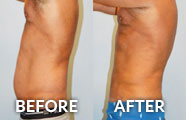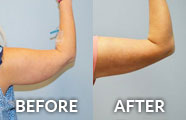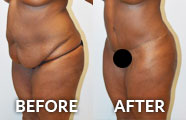Breast surgery does not always involve lifting or enlarging. Some of our patients may be happy with the fullness and volume of their natural breasts, but experience dissatisfaction with other aspects of their breasts. This summer we will be talking about several breast issues our patients come to see us about here at Southern Surgical Arts.
One common complaint we hear from patients is in regard to inverted nipples. As many as 20% of women may have at least one inverted nipple, and men may experience inversion as well. Nipples are described as inverted when the tip or tips of the nipple do not protrude outward. So instead of pointing out, as nipples typically do, the tips may appear to be indented or even tucked-in.
Nipples may be inverted all the time, or only some of the time. Some inverted nipples may protrude when stimulated, such as when exposed to cold. Nipple inversion is rated on a scale of 1-3, with 3 representing the strongest degree of inversion, in which nipples never protrude at all.
Nipples can be inverted from birth or caused by a traumatic injury to the breast or after breastfeeding. Breast tissue connected to the inside of the nipple can be very tight, essentially trapping the structure of the nipple. Most cases of nipple inversion show up during puberty, as the breasts begin maturing. Others may develop it later in life.
If the ducts are tight, the nipple remains tethered and is pulled inward as the breast expands. In these cases, nipple inversion is nothing to be concerned about unless the appearance troubles you. However, if you have experienced nipple inversion out of the blue, it is important to have your ob/gyn examine you. In some cases, nipple inversion can be a sign of disease within the breast, such as cancer.
While inverted nipples generally do not cause any medical issues or discomfort, many women wish to have them surgically corrected to present a more conventional appearance. Keep reading for 5 facts on nipple revision surgery.
How is the surgery done? During nipple revision surgery, your surgeon will make a small incision around the areola and either cut, spread, or stretch the fibrous bands attaching the nipple to the breast. This is done with the nipple pulled to a protruding position. Stitches are then placed to secure the new permanent position of the nipple.
Will I scar? Scarring is minimal and virtually invisible. Because the incision is made around the areola, any scarring will be largely disguised by the coloration and somewhat bumpy texture of the areola. No one need know you’ve had corrective surgery.
How long does it take? Nipple inversion correction is generally done in an outpatient setting, under local anesthesia with or without sedation. The procedure generally takes about an hour. Plan to have someone bring you to the clinic and drive you home afterwards.
Will I be able to breastfeed? This is something that is highly variable depending on the patient and their individual anatomy, as well as the type of procedure. If the surgeon has to cut tissue to free the nipples, you will not be able to breastfeed. With stretching, the patient may retain the ability to breastfeed, but will not know until they try. However, some patients with 3rd degree nipple inversion also may not be able to breastfeed due to the structure of the breast.
How long will I be off my feet? Recovery is generally easy, with minimal discomfort. Patients may experience some tenderness for a few days, as well as some mild swelling and bruising. You should be able to return to work with a day or two.
If you would like to discuss your options for breast correction surgery, please call Southern Surgical Arts at 423-266-3331 to schedule a FREE personal consultation with one of our award-winning surgeons. Dr. Carey Nease, Dr. Chad Deal, and Dr. Vincent Gardner are board-certified cosmetic surgeons who have performed thousands of breast procedures. They will be happy to answer all of your questions.



